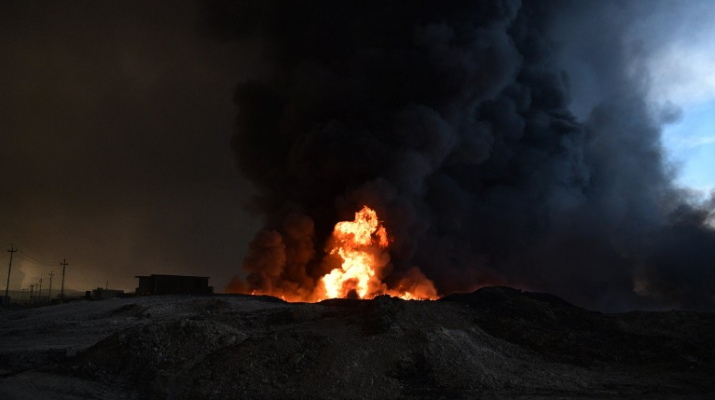The fight to regain Mosul continues as Kurdish Peshmerga forces and the Iraqi army are making advances on different fronts as they push towards the ISIL stronghold of Mosul.
78 villages so far, according to reports have been liberated and nearly 800 ISIS fighters killed as of Monday morning.
But for all its gains, the Iraqi coalition is encountering fierce resistance from ISIS, in what is anticipated to be the terror group’s last stand in the country.
The Islamic State of Iraq and the Levant group (ISIL), also known as ISIS, took full control on Monday of the town of Rutba in the western Anbar province as the approaching force tried to expel its fighters from Mosul, 700km north of Rutba.
Despite being outnumbered, ISIS is relying on asymmetric warfare tactics to inflict damage on its opponents, and terrorize long-suffering civilian populations.
The millitia group, ISIL, has also been setting fire to oil wells in the oil-rich region, in an attempt to blunt the effectiveness of the coalition’s air power by obscuring their view of targets from above.
A sulfur facility that was set ablaze near Qayyara on Thursday by ISIS militants who placed explosives and oil in the sulfur deposits and across the factory has been emitting toxic plumes that have driven hundreds to seek medical treatment, complicating military operations in the area.
According to Aljazeera, for two days ISIL forced Iraqi security forces to declare a state of emergency in the northern city of Kirkuk. Dozens of fighters targeted multiple locations in a sophisticated assault that some described as a message.
According to the Iraqi Joint Operations Command, two bomb-making factories were discovered during the first week of the assault, and nearly 400 IEDs remotely detonated by coalition forces.

